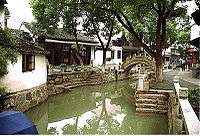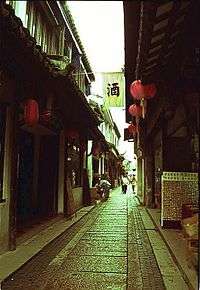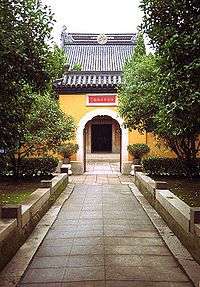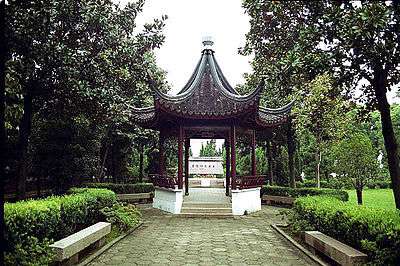Luzhi




Luzhi Town (甪直镇) is a famous historic old town located in the Wuzhong District, 18 km east of Suzhou, Jiangsu province, China. It was also known as Puli (甫里),[1] an ancient name for this town. This river town was named after a Tang Dynasty recluse poet Lu Guimeng (陆龟蒙) who retired in this town. Lu Guimong had a pseudonym: Mr. Pu-li (甫里先生).
At that time, Puli consisted of two districts: Puli (甫里) and Liuzhi(六直). Liuzhi meant that there were six straight rivers in the town. In the Suzhou dialect, "liu" was pronounced as "lu", and 六直 pronounced as Luzhi. At the end of the Qing Dynasty, Puli was changed to Luzhi township of Yuanhe County.
Luzhi is famous for its beautiful waterways and ancient bridges, some of the bridges dated back to the Song Dynasty. A walk in the ancient town Luzhi is said to be a walk into history frozen in time, tranquil and serene.
The Ming Dynasty poet Gao Qi (高启) poem : "Scene of Puli" is still an accurate description of the scenery in the ancient town Luzhi today:
- Scene of Puli
- Long bridge short bridge with willows
- Front stream rear stream with lotus
- People watching banner over wine store risen
- Seagulls escort boat to home of fishman.
Luzhi is one of the best preserved old towns in China, along with its old canals and streets. In 2003, the Chinese government published a list of "Ten Famous Chinese Historical Townships", with Luzhi featured on this list. In 2004, Luzhi was awarded a Township Preservation Award by UNESCO.
Sights
- The old town and its canals.
- Baoshen Temple. Baoshen Temple boasts a history of thousand years, built in the second year of Tianjiang of Liang Dynasty (503 AD). By Song dynasty it was called the Baoshen Zen Temple, with 5000 halls and one thousand monks.
- The Arhat statues in the Baoshen Temple are national treasures. They were the work of the Tang Dynasty sculptor Yang Huizhi.
- Tang Dynasty poet Lu Guimong tomb, with Fare Breeze Pavilion and two of his hand planted ginkgo trees.
- Shen Bohan (沈柏寒) the educator's former home
- First reformer Wang Tao (王韬) Memorial Hall
- Educator and writer Ye Shengtao (叶圣陶) Memorial Hall, at former site of The 5th High School where Ye Shengtao taught from 1917 - 1922.
Food
- Puli Trotters and Puli duck: Two dishes in Luzhi township are Puli trotters (甫里蹄) and Puli duck (甫里鸭). They are said to be prepared according to the recipe of poet Mr. Pu-li; he often treated guests with these two dishes.
- Luzhi Radish (甪直萝卜) - a pickled radish prepared according to a Qing Dynasty recipe
Famous people of Puli
- Lu Guimong (陆龟蒙) - Tang Dynasty poet, pseudonym: Mr. Puli.
- Pi Rixiu (皮日休) - Tang Dynasty poet, contemporary of Lu Guimong
- Gao Qi (高启) - Ming Dynasty poet
- Wang Tao (王 韬) - Qing Dynasty reformer, writer, newspaper publisher
- Ye Shengtao (叶圣陶) - prominent novelist and educator.
Transportation
- buses between
- Steam boats between
- Luzhi and Suzhou
- Luzhi and Kunshan
References
- ↑ 甫 has two pronunciations, 'fu' and 'pu'. 甫里 is pronounced as Pu-li, not Fu-li.
External links
| Wikimedia Commons has media related to Luzhi. |
Coordinates: 31°16′25″N 120°51′46″E / 31.2736°N 120.8627°E